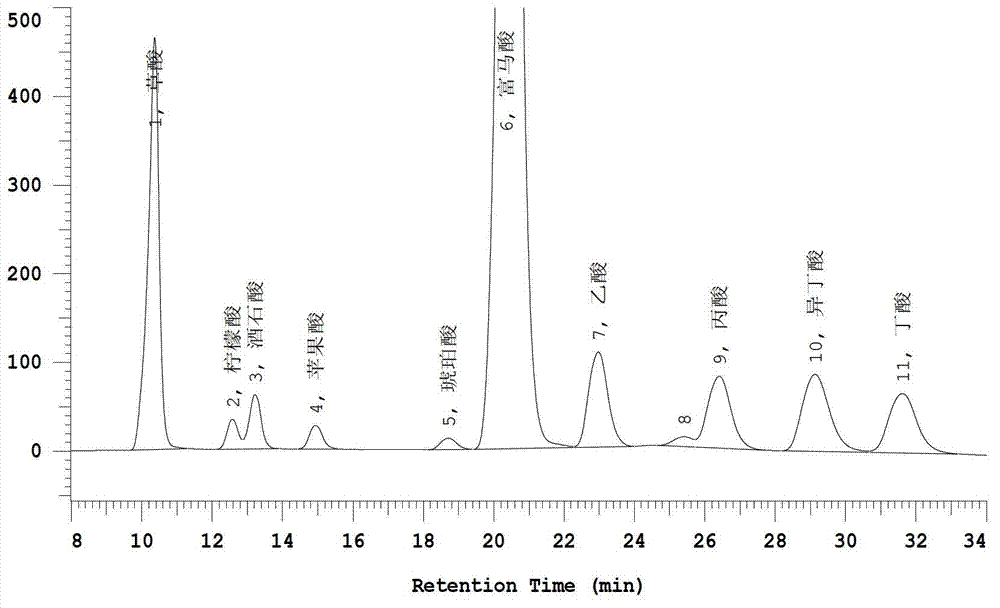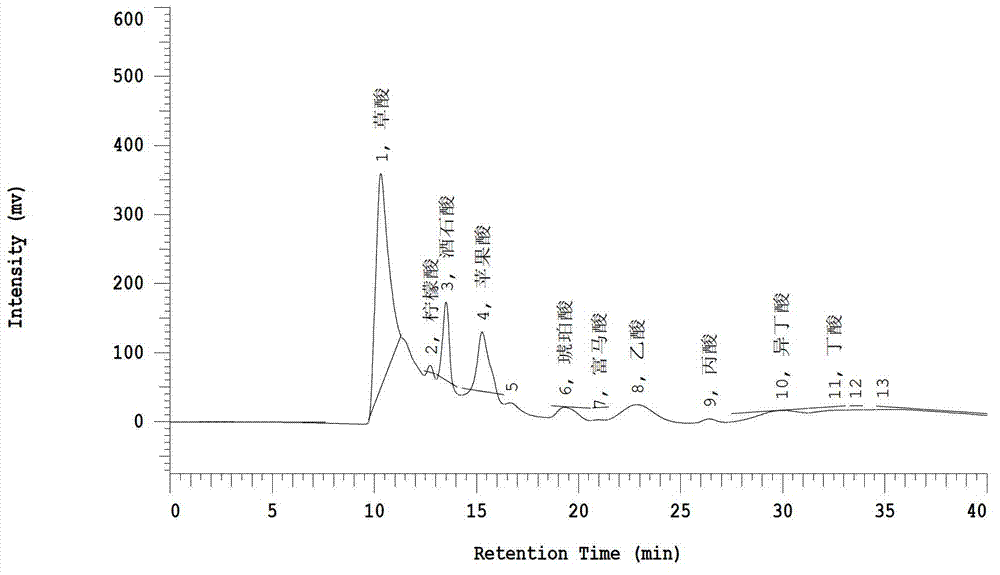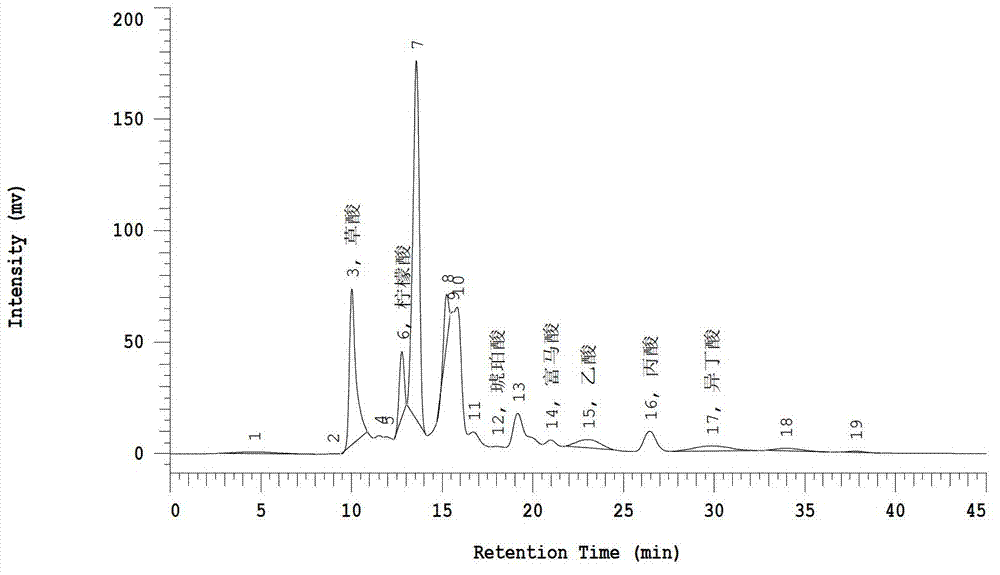High performance liquid chromatography for simultaneously detecting content of ten organic acids in fruit
A high-performance liquid chromatography and organic acid technology, applied in the field of content determination, to achieve the effect of simple and fast operation and high measurement accuracy
- Summary
- Abstract
- Description
- Claims
- Application Information
AI Technical Summary
Problems solved by technology
Method used
Image
Examples
Embodiment 1
[0032] dried grape peel
[0033] (1) Preparation of standard sample solution: Weigh oxalic acid, citric acid, tartaric acid, succinic acid, malic acid, fumaric acid, acetic acid, propionic acid, isopropionic acid, butyric acid reagents with HPLC chromatographic purity above 99%, Use 0.001mol / L sulfuric acid solution to prepare 0.5mg / mL standard solutions of 10 kinds of organic acids; according to the actual content of organic acids in wine and the response value obtained at the maximum absorption wavelength of each standard, dilute a certain number of times to prepare a mixed standard solution , and then dilute the mixed standard solution into different concentration gradients to obtain standard sample solutions, that is, 0.5, 0.25, 0.1, 0.05, 0.025, and 0.02 times the concentration of the above mixed standard solution.
[0034] (2) Preparation of the solution to be tested: Weigh 2g of dried grape peel and grind it with 20mL of 80% ethanol, then extract it in a constant temper...
Embodiment 2
[0050] dried grape pulp
[0051] The only difference between this example and Example 1 is that the dried grape pulp sample is used instead of the dried grape peel sample in Example 1; other operations are completely consistent with Example 1. This embodiment detects and obtains 10 standard curve regression equations (see above table 1), such as figure 1 The high performance chromatograms of the standard samples shown and image 3 The high-efficiency chromatogram of the liquid to be tested is shown; the content of 10 organic acids in the dried grape pulp sample is quantitatively analyzed and calculated by the external standard method, and the analysis and calculation results are shown in Table 2 above.
Embodiment 3
[0053] fresh loquat pulp
[0054] (1) Preparation of standard sample solution: Weigh oxalic acid, citric acid, tartaric acid, succinic acid, malic acid, fumaric acid, acetic acid, propionic acid, isopropionic acid, butyric acid reagents with HPLC chromatographic purity above 99%, Use 0.0025mol / L sulfuric acid solution to prepare 0.5mg / mL standard solutions of 10 kinds of organic acids; according to the actual content of organic acids in wine and the response value obtained at the maximum absorption wavelength of each standard, dilute a certain number of times to prepare a mixed standard solution , and then dilute the mixed standard solution into different concentration gradients to obtain standard sample solutions, that is, 0.5, 0.25, 0.1, 0.05, 0.025, and 0.02 times the concentration of the above mixed standard solution.
[0055] (2) Preparation of the solution to be tested: Weigh 10g of fresh loquat pulp and place it in a tissue masher, add 100ml of 80% ethanol to homogenate...
PUM
 Login to View More
Login to View More Abstract
Description
Claims
Application Information
 Login to View More
Login to View More - R&D
- Intellectual Property
- Life Sciences
- Materials
- Tech Scout
- Unparalleled Data Quality
- Higher Quality Content
- 60% Fewer Hallucinations
Browse by: Latest US Patents, China's latest patents, Technical Efficacy Thesaurus, Application Domain, Technology Topic, Popular Technical Reports.
© 2025 PatSnap. All rights reserved.Legal|Privacy policy|Modern Slavery Act Transparency Statement|Sitemap|About US| Contact US: help@patsnap.com



